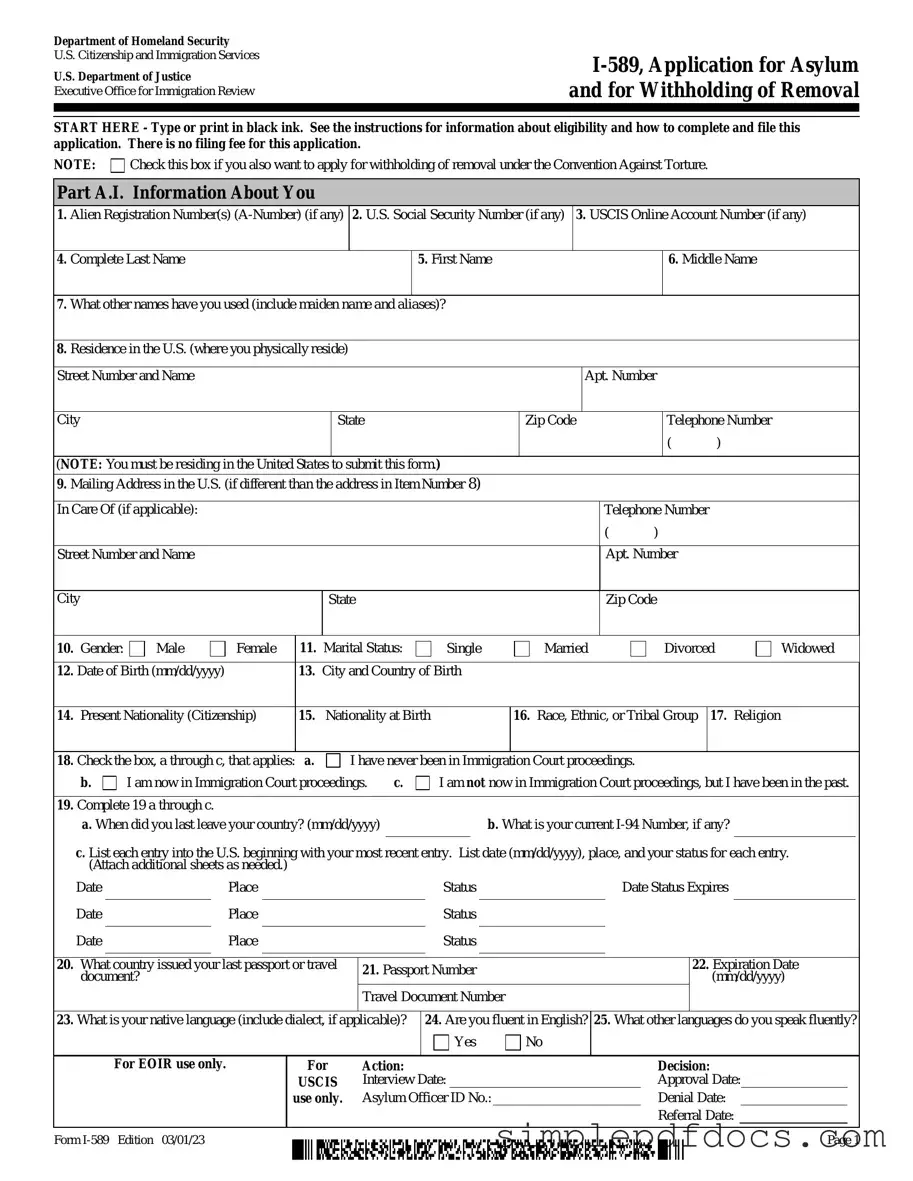Fill Your USCIS I-589 Form
The USCIS I-589 form is an application for asylum and for withholding of removal, designed for individuals seeking protection in the United States due to persecution or a well-founded fear of persecution in their home country. Completing this form is a crucial step in the asylum process, allowing applicants to present their case for safety and refuge. Understanding the requirements and procedures associated with the I-589 can significantly impact the outcome of an asylum application.
Get Document Here
